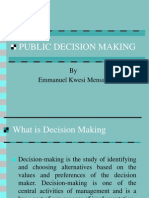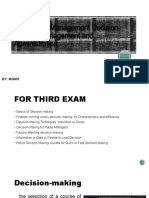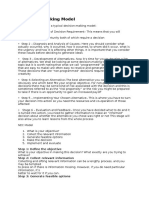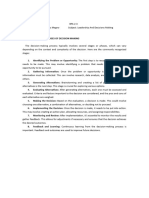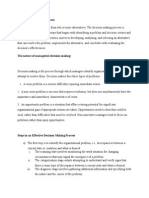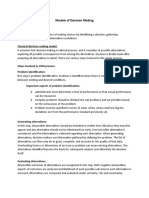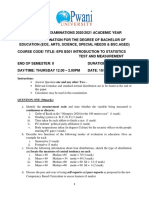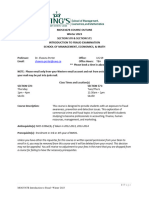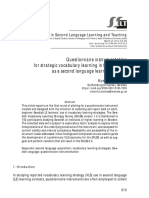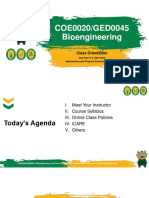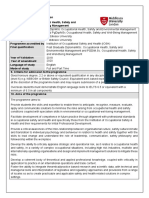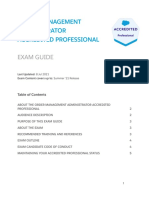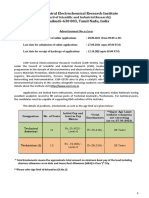DECISION MAKING AND PROBLEM SOLVING
I. Clarifying Problem-Solving and Decision-Making
Problem Solving – A set of activities designed to analyze a situation systematically and
generate, implement, and evaluate solutions. This invokes the seeking of solutions to problems
that arise in an institution.
Decision-Making – A mechanism for making choices at each step of the problem-solving
process. This is the process of identifying and selecting a course of action from two or more
courses of action to be taken to solve a problem.
II. Approaches to Problem-Solving
1. Rational Approach – The rational approach involves clarifying, giving description of the
problem, analyzing causes, identifying alternatives, assessing each alternative, choosing
one, implementing it, and evaluating whether the problem was solved or not.
2. Appreciative Inquiry – This approach asserts that “problems” are often the result of our
own perspectives on a phenomenon. Appreciative inquiry includes identification of our
best times about the situation in the past and wishing and thinking about what worked
best then.
III. Stages of Decision-Making
The first leg of decision-making is goals and objective. The second stage is problem
recognition. Here, the decision-maker has to be able to know what is happening and also to
�recognize the discrepancies which exists. During the third stage, the decision-maker must
evaluate the discrepancy whether it is an important one or not. Next, it has to be found out how
the problem occurred i.e., ‘information-search phase’. This stage is crucial but least handled
well. In the next stage ‘course of action’ must be explored i.e., number of alternatives be
explored. This is the ‘alternative-generation’ phase. Next comes the evaluation of alternatives
that is the ‘choice phase’. Here, the pros and cons of each alternative have to be thought about
before taking a decision which is known as choice of action. The last phase of the process
involves the implementation and evaluation of the decision.
IV. Types of Decision
1. Organizational and Personal Decisions – Personal decisions are those decisions
that cannot be delegated to others. Organizational decisions are those decisions
that are taken to achieve organizational goals.
2. Routine and Strategic Decisions – Routine decisions are those which are
repetitive in nature. ‘Strategic’ decisions are those decisions which have to be
deliberated upon in depth.
3. Policy and Operating Decisions – Policy decisions are those decisions which
are taken at the higher level. Operating decisions are those decisions which lay
down procedure of execution of the policy made.
V. Decision-Making Styles
1. Individual Decision Making – The leader must make the decision alone, and
input from others is limited to collecting relevant information.
2. Group Decision Making – The leader and others work together until they reach
a consensus decision. Each group member’s opinion and point of view is
considered.
3. Decision Making Through Consultation – The leader consults with others for
ideas and suggestions before making a decision, considering their input but
retaining final decision-making authority.
4. Delegating the Decision – The leader sets the parameters, and then allows one or
more colleagues to make the final decision. Although the leader does not make the
decision, he or she supports it.
�VI. Problem-Solving Model





